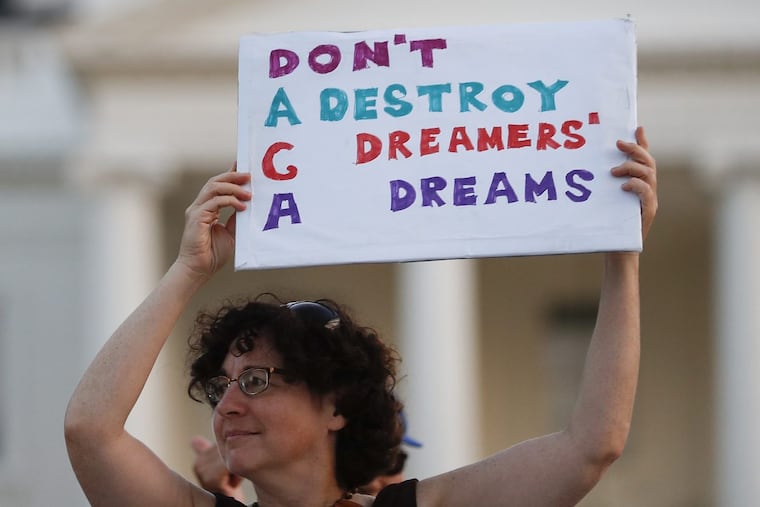What is DACA? A brief guide to the Deferred Action for Childhood Arrivals program
Here's a primer on DACA, the program the Trump administration is ending.

What is DACA?
DACA is the acronym for the Deferred Action for Childhood Arrivals program, which was implemented by the Obama administration in 2012. The program allows some children who arrived in the United States illegally the opportunity to stay in the country legally.
What are the rules for applying?
A DACA applicant must be in school, have completed high school or received a GED, or have completed military service.
The applicant must have lacked legal immigration status, must have arrived in the U.S. before June 2007, been younger than 16 when they arrived, lived in the U.S. continuously since their arrival and been younger than 31 on June 15, 2012, when the program started.
So a child who arrived illegally after 2007 doesn't qualify?
Correct.
What happens when a DACA applicant passes his or her vetting?
The applicant gets a two-year deferral and the ability to get a driver's license or work permit, and enroll in college. The person may renew the application after the two years expire.
Are DACA applicants dangerous?
No more than any other people and probably less. All DACA applicants are vetted for any criminal record and to see if they might be a threat to national security.
Who are these "Dreamers" everybody talks about?
"Dreamers" are the young people protected by DACA. There are about 800,000 of them in the U.S., making up about 2.5 out of every 1,000 people in the country. For perspective, when Lincoln Financial Field is filled for an Eagles game, about 170 of those 69,000-plus fans would be Dreamers.
Why are they called Dreamers?
The original bipartisan legislation proposed during George W. Bush's administration was called the Development, Relief and Education for Alien Minors (DREAM) Act. It offered an easier path to permanent legal residency and failed to pass. DACA was a compromise.
Where did most Dreamers come from?
Mexico and Central America.
Where do most live now?
California, Florida, Texas, and New York, according to the American Immigration Council.
Why is DACA in the news now?
The Trump administration is ending the program, a decision that has drawn protests in Philadelphia and elsewhere.